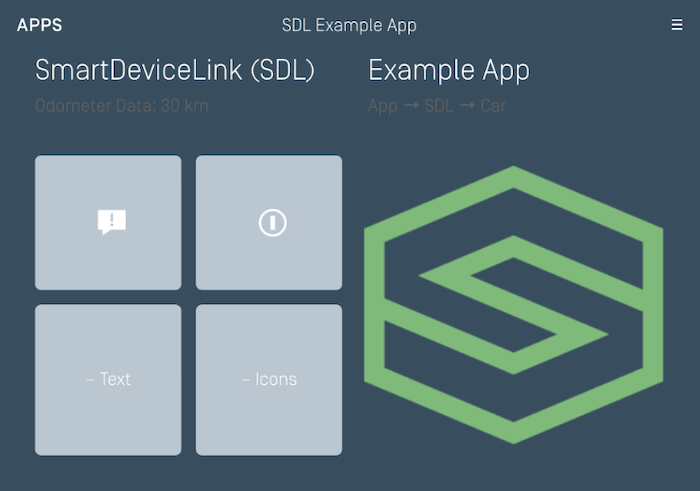Connecting to an Infotainment System
In order to view your SDL app, you must connect your device to a head unit that supports SDL Core. If you do not have access to a head unit, we recommend using the Manticore web-based emulator for testing how your SDL app reacts to real-world vehicle events, on-screen interactions and voice recognition.
You will have to configure different connection types based on whether you are connecting to a head unit or an emulator. When connecting to a head unit, you must configure a Multiplex connection. Likewise, when connecting to an emulator, a TCP connection must be configured.
Connecting to an Emulator
To connect to an emulator such as Manticore or a local Ubuntu SDL Core-based emulator you must implement a TCP connection when configuring your SDL app.
Getting the IP Address and Port
Generic SDL Core
To connect to a virtual machine running the Ubuntu SDL Core-based emulator, you will use the IP address of the Ubuntu OS and 12345 for the port. You may have to enable port forwarding on your virtual machine if you want to connect using a real device instead of a simulated device.
Manticore
Once you launch an instance of Manticore, you will be given an IP address and port number that you can use to configure your TCP connection.
Setting the IP Address and Port
// Set the SdlManager.Builder transport builder.setTransportType(new TCPTransportConfig(<PORT>, <IP ADDRESS>, false));
Connecting to a Head Unit
To connect your device directly to a production vehicle head unit or Test Development Kit (TDK), make sure to implement a Multiplex connection. Then connect the device using a USB cord or, if the head unit supports it, Bluetooth.
// Set the SdlManager.Builder transport builder.setTransportType(new MultiplexTransportConfig(context, <APP ID>));
Running the SDL App
Build and run the project in Android Studio, targeting the device or simulator that you want to test your app with. Your app should compile and launch on your device of choosing. If your connection configuration is setup correctly, you should see your SDL app icon appear on the HMI screen:

To open your app, click on your app's icon in the HMI.

This is the main screen of your SDL app. If you get to this point, your SDL app is working.
Troubleshooting
If you are having issues with connecting to an emulator or head unit, please see our troubleshooting tips in the Example Apps section of the guide.
View on GitHub.com